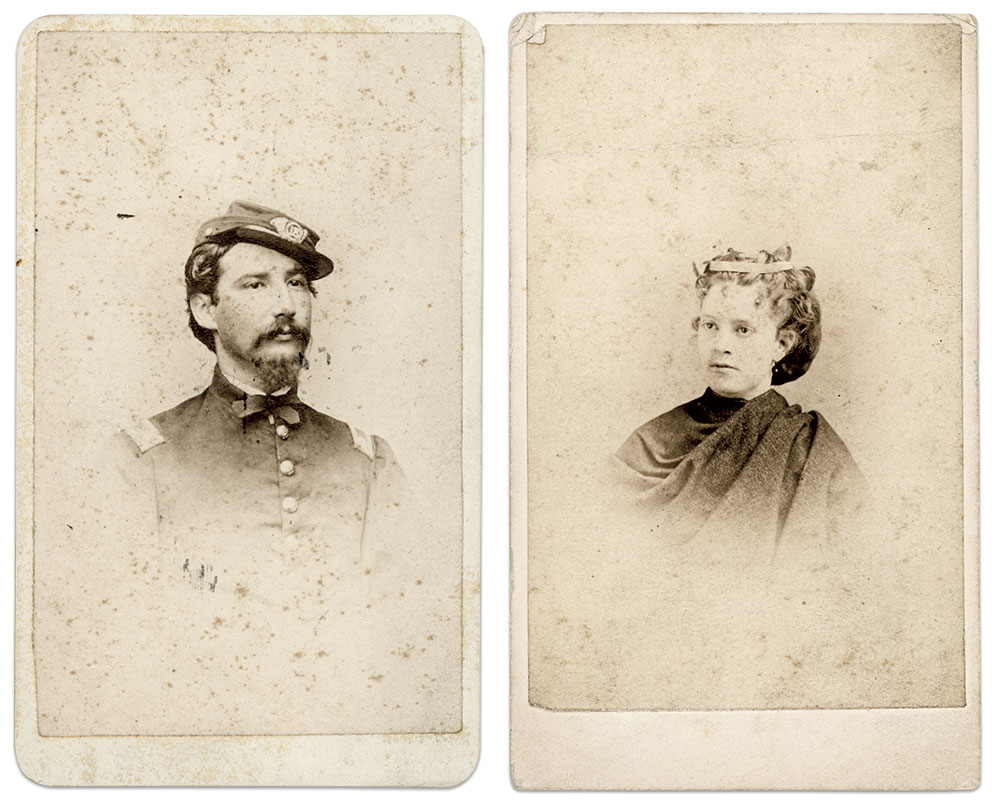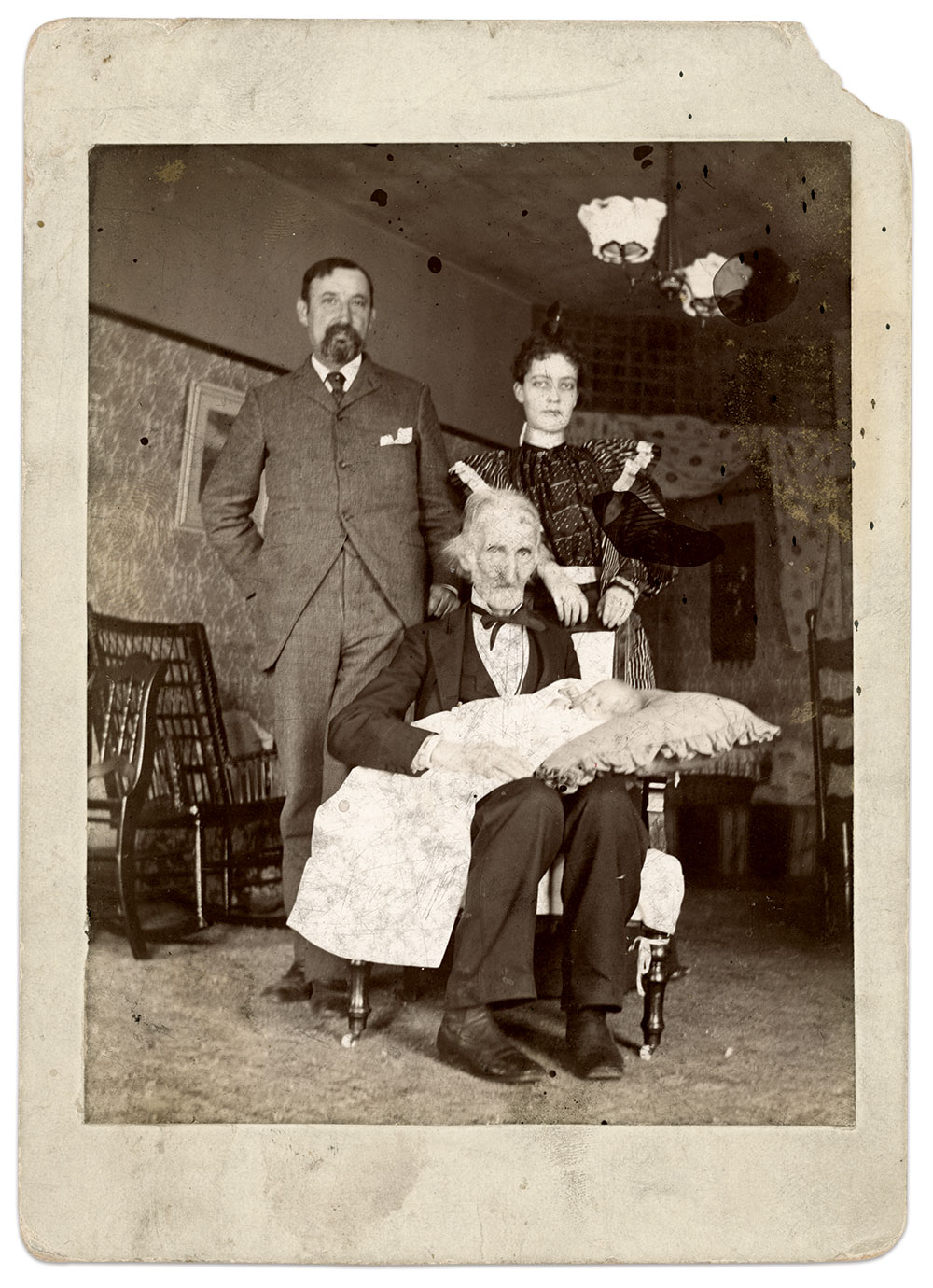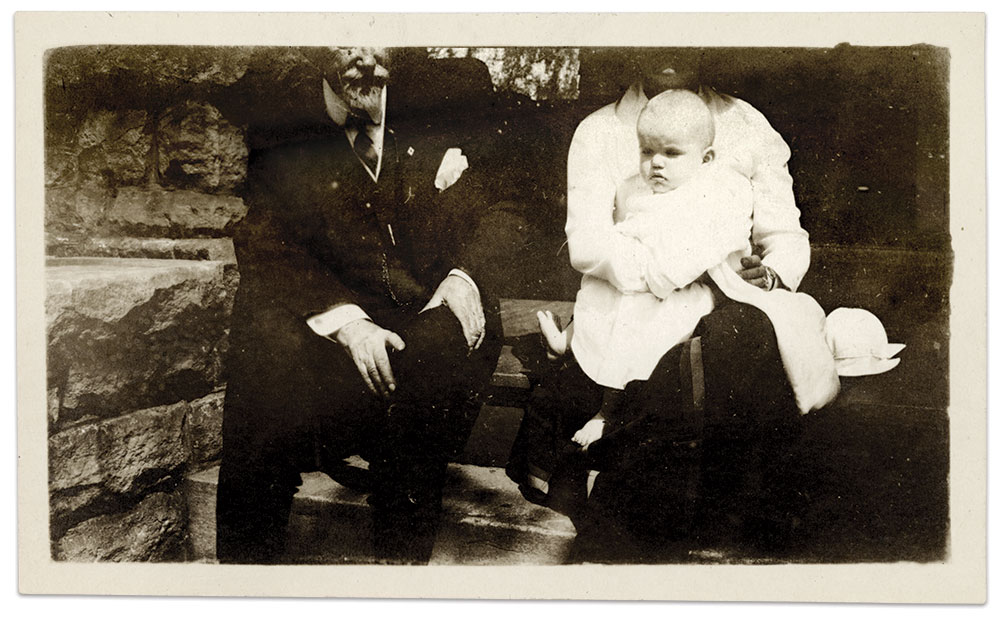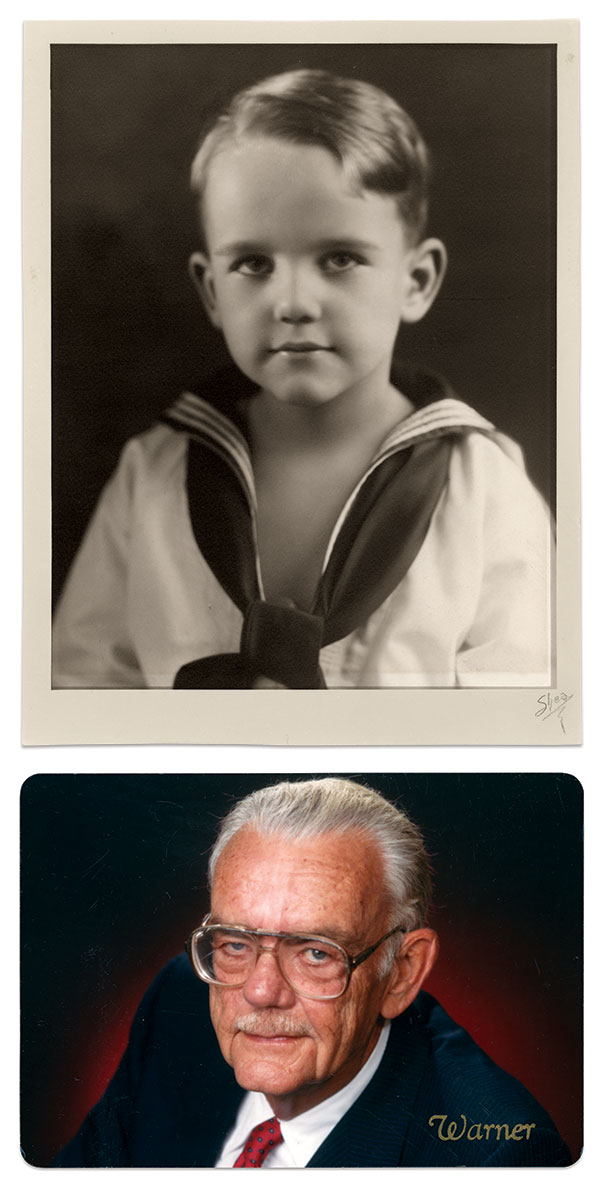By Ronald S. Coddington, featuring artifacts from the Eleanor Laughlin Family Papers
Henry Haymond penned a letter to his great-grandson on the occasion of the youngster’s second birthday. The white-bearded, genial gentleman in the twilight of life had written extensively during his 82 years, including a well-researched profile of his home county in West Virginia and numerous historical sketches.


But this letter, intended for an audience of one, is arguably Haymond’s most important work. In it, he offers practical advice to the great-grandson he would not live to see grow to manhood.
Haymond drew upon a deep well of experience in preparation for the letter: education at Northwestern Virginia Academy in Clarksburg, attorney, circuit court clerk for Harrison County, husband, father, Civil War veteran.
His war service began in late 1861. An ardent anti-secessionist who believed the ballot box, not armed rebellion, was the way the redress grievances against the government, Haymond joined the 18th U.S. Infantry with a captain’s commission.
Haymond spent the war years in the Western Theater. At Stones River on Dec. 31, 1862, the 18th and other regulars collided with advancing Confederates and withdrew with heavy casualties after a sharp fight. Haymond came away with a slight wound in his right knee. Later that year at Chickamauga, he proved his mettle again. A grateful government awarded him a major’s brevet for these battles and another brevet for lieutenant colonel for his war service.
Haymond remained in the army after the rebellion ended. The War Department dispatched him to Dakota Territory, where he contributed to the establishment of forts Kearny and Fetterman. The latter post protected settlers traveling along Bozeman Trail, and was the site of the December 1866 massacre of 81 U.S. soldiers by Lakota warriors and their leader, Red Cloud. Haymond resigned in 1870. At the time he ranked as a captain in the 27th U.S. Infantry.
On the home front, Haymond had started a family towards the end of his army career. In 1867, he married Mary Garrard, and they brought a daughter, Delia, into the world the following year. Delia grew up and married Benjamin Blackford, and they became parents of a daughter, Eleanor. In 1916, Eleanor wed James Edwin Watson, Jr. A year later, on Nov. 8, 1917, Eleanor gave birth to a son, James Edwin “Ned” Watson III—Haymond’s great-grandson.

Two years later, Haymond wrote to Ned, “On this your second birth day I address you this note, to be opened when you are able to read and understand it, which I suppose will be about your eighth birth day.” He added, “Of course before you read this, I will have been laid in the grave yard, but hope you will occasionally think of me, as you are the only boy in my family. You to day are a lively active little fellow, and bid fair to grow into a strong healthy man with a good disposition and genial manners.”
The heart of Haymond’s note was advice to the little boy whom he’d never see grow up:
- Obey your parents.
- Always tell the truth.
- When away from home never do anything that you think your father and mother would not like.
- Treat old people with kindness.
- Be good to the poor and unfortunate.
- Always be polite to the ladies, and agreeable to everyone.
- In all your business dealings be honest and honorable.
- Learn to control yourself, for he who conquers himself, is greater than he who conquers a city.
- Always be loyal and true to your Country.
The last point underscored his nine years of military service and his Civil War contributions.
Eight months later, on July 31, 1920, Haymond passed after a brief illness. He was 83.


Little Ned grew up and earned degrees from Colgate and West Virginia universities, served in the army during World War II, and became a successful attorney. Active in politics as a state legislator and power broker, citizens across West Virginia knew the outgoing, friendly Ned by his nickname, “Big Daddy.” He died in 1992 at age 74.
Great-grandfather and Civil War veteran Haymond would likely have been proud.
Special thanks to Eleanor Laughlin for sharing her family history, and to the membership of the Neighbor’s Club in Arlington, Va., for their hospitality.
References: Haymond, History of Harrison County West Virginia; Army of the Cumberland Proceedings of Reunions; New York Times, July 27, 1865; Times-West Virginian, Sept. 23, 24 and 26, 1992; Sarasota Herald-Tribune, Sept. 23, 1992; Henry Haymond to James Edwin “Ned” Watson III, Nov. 8, 1919.
Ronald S. Coddington is Editor and Publisher of MI.
SPREAD THE WORD: We encourage you to share this story on social media and elsewhere to educate and raise awareness. If you wish to use any image on this page for another purpose, please request permission.
LEARN MORE about Military Images, America’s only magazine dedicated to showcasing, interpreting and preserving Civil War portrait photography.
VISIT OUR STORE to subscribe, renew a subscription, and more.

